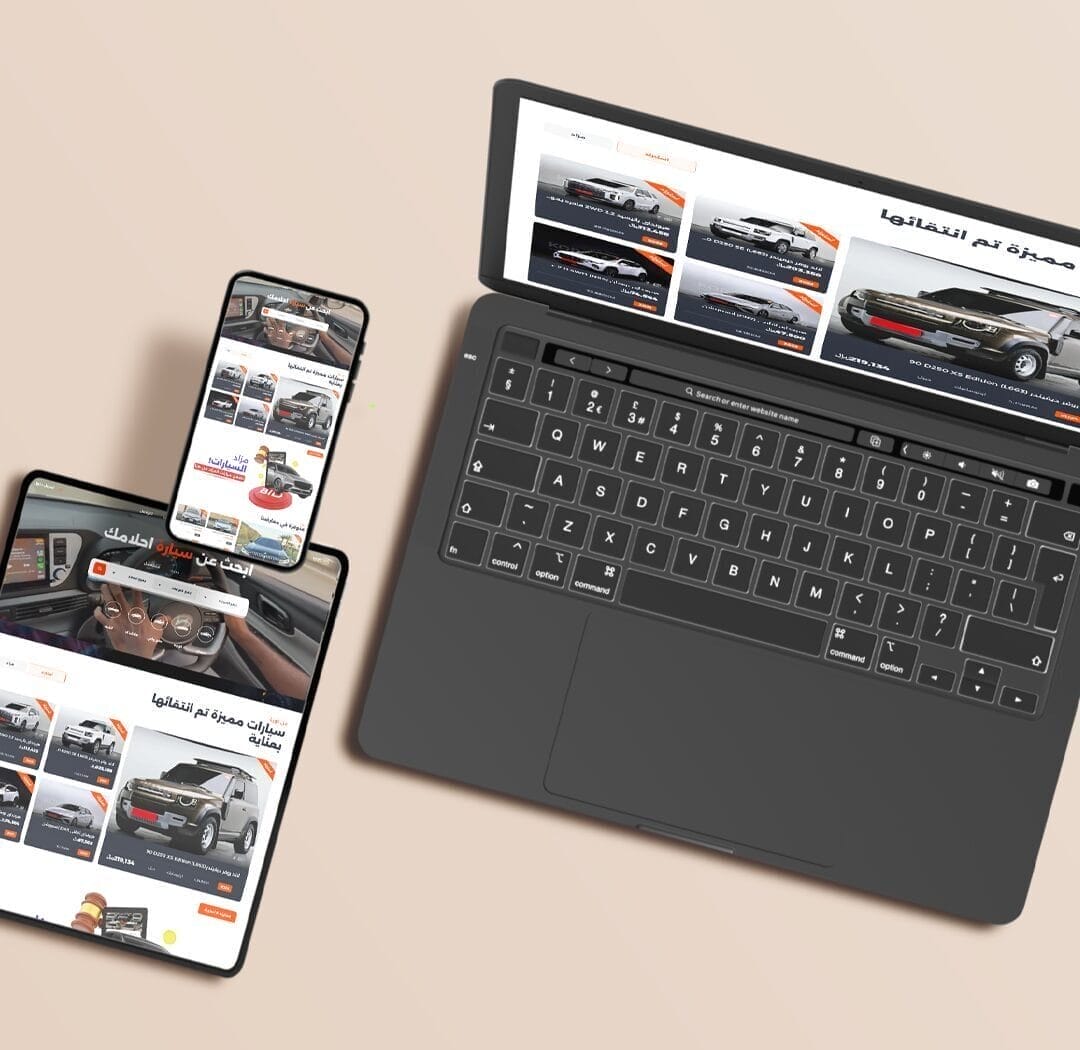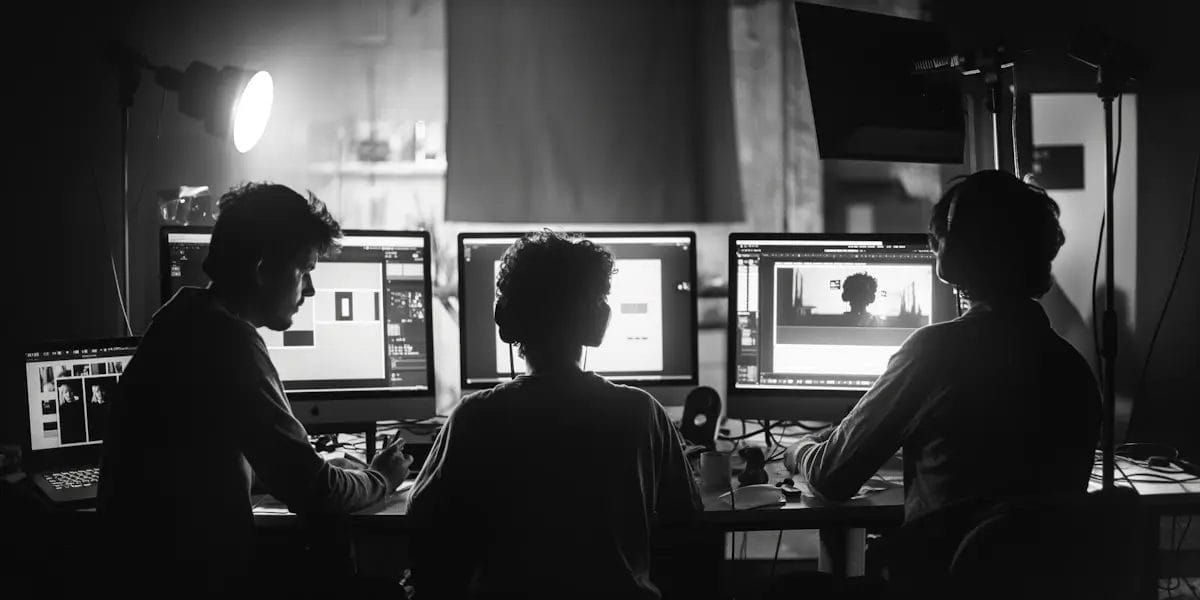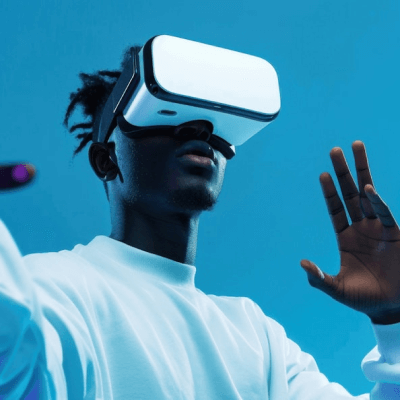In our current era, artificial intelligence has become an essential tool indispensable for entrepreneurs and companies seeking to maintain their competitiveness in the market. In 2025, this technology will represent a qualitative leap in how designs and innovative solutions are delivered, significantly contributing to enhancing efficiency and productivity.
Professional designer Jiyad relies on artificial intelligence tools as a primary support for his work, where this technology provides him with the ability to deliver innovative and precise design solutions, distinguishing his work and making it excel in the market.
If you are an entrepreneur or company seeking to develop your brand and achieve sustainable success, artificial intelligence represents the ideal solution to increase your efficiency and achieve excellence. Seize this opportunity now to be part of this technological transformation and achieve superiority in your field, just like designer Jiyad did.
What is Artificial Intelligence?
Artificial intelligence today has become one of the fundamental factors revolutionizing many fields, including the world of design. Artificial intelligence is an advanced technology that allows devices and systems to make decisions and analyze data in a manner similar to the human brain, opening huge opportunities for designers and clients to improve work and increase efficiency. But how can this technology contribute to simplifying design processes? This is what we will address in this part of the article.
How Does Artificial Intelligence Contribute to Simplifying Design Processes?
- Automating routine tasks: Artificial intelligence can automate many tasks that used to take a long time, such as color adjustments, text formatting, or image enhancement. This saves time and effort for designers so they can focus on more important creative aspects.
- Accurate data analysis: Artificial intelligence can quickly and accurately analyze data related to users or clients. For example, AI can analyze customer preferences and help designers create interactive interfaces better suited to these preferences.
- Generating innovative designs using algorithms: Using advanced algorithms, artificial intelligence can offer innovative design solutions that might not occur to the designer. AI can also suggest design modifications based on current trends or changes in audience preferences.
- Continuous design improvement: Artificial intelligence can periodically improve designs by predicting how users will interact with them. It can provide recommendations for continuous design adjustments according to user behavior.
- Personalizing designs: Through data analysis, artificial intelligence can customize designs for each client or audience individually. This may include customizing colors, layouts, and styles according to consumer preferences, enhancing the customer experience.
- Supporting creative decision-making: Artificial intelligence helps make quick decisions related to designs based on patterns and collected data. By providing multiple options to the designer based on accurate data analysis, better and more precise design decisions can be made.
Is Artificial Intelligence the Future?
Artificial intelligence is considered one of the most future-shaping technologies across various fields, especially in the world of design. With the rapid advancement of technology, every designer must utilize these modern tools to stay ahead and succeed. But, is artificial intelligence truly the future? And how can the creative designer in 2025 excel and succeed thanks to this technology through
- Rapid technological advancement: Artificial intelligence is among the fastest-growing technical fields, relied upon in many industries including design. With ongoing developments, this technology will become an essential part of designers’ tools in the future.
- Automation possibilities: With increased reliance on artificial intelligence, designers will be able to automate many routine, time-consuming tasks. This will give them more time to work on creative aspects that require human thinking.
- Continuous learning and adaptation: Artificial intelligence is characterized by its ability to continuously learn from data and adapt according to new variables. This enables it to provide innovative solutions and designs that respond faster than humans to market changes or customer preferences.
- Innovation capability: Artificial intelligence is not just an execution tool but also a tool for innovation. Through advanced algorithms, it can offer unconventional design ideas and innovations that ordinary designers might find difficult to conceive.
- Its role in delivering personalized experiences: Artificial intelligence helps customize designs for each client individually, making the experience more effective and aligned with each person’s unique requirements. This contributes to improved customer interaction and better results.
How Can the Creative Designer in 2025 Excel and Succeed Thanks to This Technology?
- Leveraging artificial intelligence to improve efficiency: The creative designer in 2025 should use artificial intelligence to automate repetitive tasks such as photo editing, color correction, or text formatting. This frees up time that can be invested in working on creative ideas.
- Using artificial intelligence to generate innovative design ideas: Designers who use AI will have the advantage of continuous innovation. By relying on AI algorithms, they can obtain new unconventional ideas that contribute to improving their designs.
- Analyzing customer data to improve designs: Designers can benefit from AI in analyzing data related to customer preferences, helping them customize designs based on audience behaviors and needs.
- Using AI in customer interaction: In the future, AI will become a key tool in improving customer experience. By applying AI technologies, the creative designer can provide innovative solutions that meet customer requirements quickly and efficiently.
- Achieving competitive superiority by improving quality: With the use of artificial intelligence, designers can significantly enhance the quality of designs, whether in image enhancement, performance speed, or delivering more interactive designs. These improvements will help the creative designer outperform competitors.
Note: –
Artificial intelligence is not a substitute for human creativity but a tool that enhances creativity and contributes to improving efficiency and quality. Therefore, designers in 2025 should treat AI as a powerful ally that helps them deliver innovative and unique design solutions, helping maintain their superiority in the growing job market.
Why Should Companies Invest in Artificial Intelligence in Design?
- Improving efficiency and reducing costs: Artificial intelligence helps automate many routine tasks in design, such as color adjustments or image enhancement, saving time and resources. This leads to cost reduction and increased productivity.
- Increasing work speed and achieving immediate results: AI can complete many tasks faster than humans, enabling companies to deliver projects in less time. This speed increases the company’s ability to compete in the market and achieve higher sales.
- Analyzing data to improve designs: By analyzing data related to customers or target audiences, AI can provide more accurate and suitable designs for user preferences. Companies relying on such analyses can offer customized designs that enhance the customer experience.
- Achieving innovation in designs: Through advanced algorithms, AI can offer new and unconventional design solutions. This opens the way for companies to create innovative designs that attract customer attention and give them a competitive advantage.
- Supporting effective business decision-making: AI helps companies make well-informed decisions based on detailed analysis of data and market trends. This can improve design strategies aligned with changing market needs.
- Improving customer experience: By delivering customized and high-quality designs, AI helps companies enhance customer engagement with their products. When customers feel the design fits their specific needs, they are more likely to return or recommend the product.
How Can Artificial Intelligence Be Integrated with Human Creativity to Achieve the Best Results?
- Using AI to automate routine tasks: Designers can use AI to automate repetitive tasks like color coordination or preparing simple graphics. This allows them to focus on creative aspects that require human thinking, such as generating ideas and designing complex concepts.
- Using AI to analyze trends: AI can analyze prevailing market trends and popular designs. By combining this data with the designer’s creativity, innovative designs aligned with modern trends can be created.
- Providing innovative suggestions from AI: AI can suggest innovative design ideas based on collected data. Designers can use these suggestions as inspiration to develop new and unique designs.
- Personalizing designs: AI allows accurate personalization of designs according to client preferences. The human designer can integrate these personalizations with their creative touch to produce designs tailored to each individual client.
- Achieving a balance between technology and creativity: The idea is to integrate AI as a tool that enhances the designer’s creative capacity without replacing it. AI can provide options and tools that help the designer choose the best, while the human element remains the driver of the creative process.
Investing in artificial intelligence in design will help companies improve efficiency and reduce costs, while human creativity remains the most important element in producing innovative designs. Integrating AI with human creativity is not just an option but a necessity to achieve the best results in the future.
In 2025, artificial intelligence has become an indispensable element in the world of design. Technology offers immense opportunities to improve design processes, from automating routine tasks to analyzing big data to deliver customized designs that precisely meet customer needs. If you want to outshine competitors and achieve remarkable success in the design industry, leveraging AI is a key step toward a bright future.
Thanks to this advanced technology, you can improve efficiency, save time, and increase the level of creativity in your designs. So don’t miss the opportunity! Start integrating AI into your business now and get ready to achieve the best results in the future.
Are you ready to seize the new opportunities in design? Don’t hesitate to take a step toward the future and start exploring the possibilities of AI in your design today.
Frequently Asked Questions
1- What is artificial intelligence in design?
Artificial intelligence in design is the use of AI technologies and software to improve, analyze, and generate designs. This is done by automating routine tasks, analyzing data, and offering innovative design ideas.
2- How can AI improve the design process?
AI can automate many repetitive tasks like color adjustments, image enhancement, or customizing designs to fit the client’s preferences. It also helps analyze data and deliver innovative and fast design solutions.
3- How can designers benefit from AI in 2025?
Designers can benefit from AI to boost productivity by automating routine tasks, generating new design ideas, and analyzing customer preference data to create customized and advanced designs.





